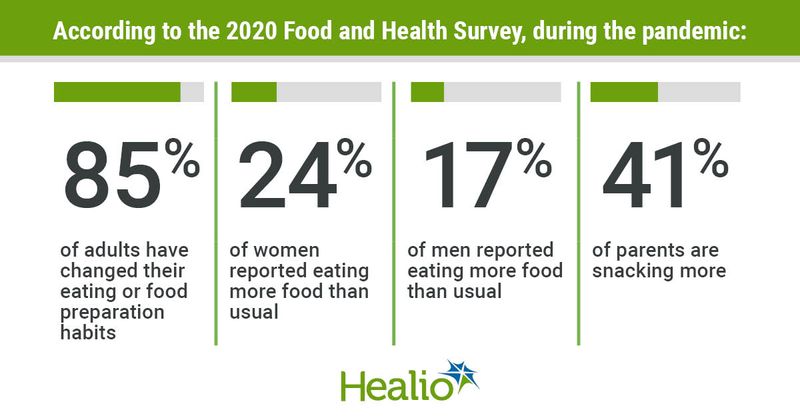Survey: US adults changing eating habits during COVID-19
Click Here to Manage Email Alerts
More than 40% of parents in the United States are snacking more during the COVID-19 pandemic, data from the International Food Information Council Foundation’s 2020 Food and Health Survey show.
“Physicians are trusted sources of information, so checking in on patients’ needs and sharing science-based information is really important,” Ali Webster, PhD, RD, the council’s director of research and nutrition communications, told Healio Primary Care. “Physicians are in a unique position to cut through some misinformation or confusion that patients may have with regards to the connection between mind, body and positive health outcomes.”

Researchers reviewed 1,011 responses from an online survey conducted in April among U.S. adults aged 18 to 80 years. Results showed that:
- 85% of respondents have changed their habits surrounding eating or food preparation (eg, washing fresh produce more or eating more premade meals).
- 41% of consumers aged 18 to 35 years and 26% of those aged older than 50 years snacked more.
- 41% of adults with children and 29% of adults without children snacked more.
- 31% of women and 22% of men reported thinking about food more than usual.
- 24% of women and 17% of men indicated eating more food more than usual.
“Parents jumped out as a demographic subgroup of interest in this survey,” Webster said.
“With the closure of schools and day care options coupled with a shrinking of our social support systems, parents are shouldering more responsibilities than ever. These stressors may be manifesting in their approach to food.”

Webster noted that consumers aged younger than 35 years were most likely to have positively and negatively changed the nutritional value of the food they ate by cooking at home more, consuming more take-out items or engaging in similar behaviors.
“Such adults are likely to be in a broad range of living and lifestyle situations,” Webster said, adding that this age group is often experiencing a time of great transition, even in the absence of a pandemic.
The survey also showed that 72% of consumers who are in excellent or very good health and 60% of consumers in fair or poor health reported confidence in the safety of the nation’s food supply.
“It’s reassuring to see that despite the challenges that we’ve faced in the last few months, a significant majority of people are still confident in the safety of the U.S. food supply,” Webster said.

